11 Feb 2010
How to Self-test Psoas and Hamstring Flexibility
Lauren Downes MSPT
Two muscles which directly affect a skaters’ performance are the psoas (hip flexor) and the hamstring. There are several simple tests that you can perform to help you assess your flexibility and need for a stretching program.
The Psoas
The psoas muscle flexes the hip and helps to bring the knee up towards the chest. It has connections to the anterior part of several vertebrae of the lumbar spine and the pelvis, and attaches at the front of the hip on the femur bone. See picture A
A 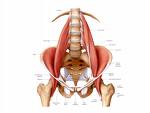 To test your psoas flexibility, lie on your back on a table, with your buttocks close to the end of the table. Hug both knees into your chest with your arms. While holding one knee tightly into your chest, slowly lower the opposite leg into the position in picture B. Your back should remain flat on the table.
B 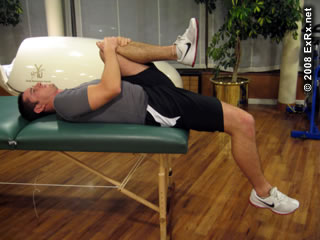 C 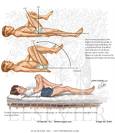 The upper part of your leg should be level or just below the table, and the knee close to a 120 degree angle as it hangs. If your leg rests in the air above the level of the table, it will indicate a tight psoas muscle. In picture C, note the test is done with the leg on the table, yet you can see in the lower portion, there is space between the knee and table, and in the upper portion, there is no space. The bottom picture indicates a tight psoas. Also note that if your knee (refer to picture B) is at an angle greater than 120 degrees, the rectus femoris section of your quadriceps is tight, which indicates the need for quadriceps stretching.
The Hamstring
The hamstring muscle acts to extend your hip and flex your knee. It begins in the back of your hip and attaches behind the knee. See picture D
D 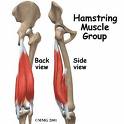 To test for hamstring flexibility, lie on your back, and have another person passively raise one leg straight in the air. The knee should remain straight, and the leg that is on the table should not lift off of the table. Also keep your hips squared. A skater generally needs to have flexibility greater than 90 degrees (which is straight up in the air), and to complete several moves that require significant flexibility, greater than 120 degrees. See picture E
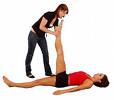 E |